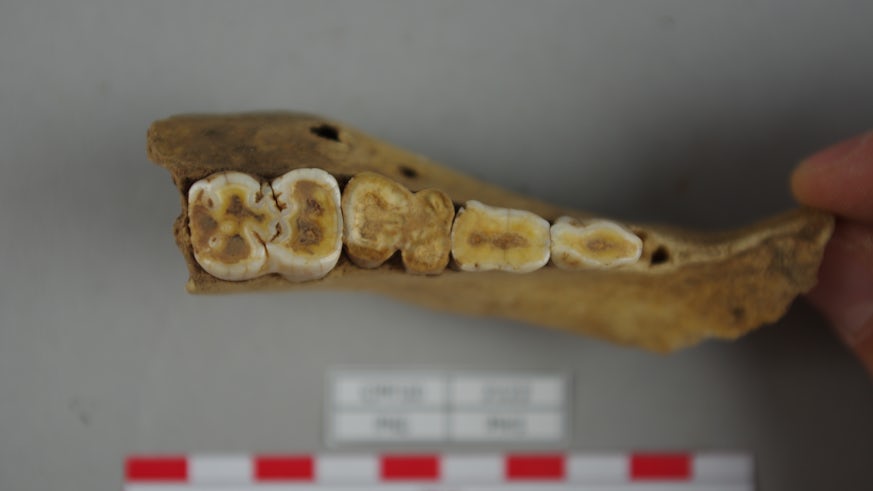How to feed an invading army thousands of miles from home
4 October 2017

Conquering Romans relied on resources from near and far to sustain their forces against the native tribes in Wales, according to new research by Cardiff University archaeologists.
In a study published in Archaeological and Anthropological Sciences, Dr Peter Guest and Dr Richard Madgwick of the University’s School of History, Archaeology and Religion, used biochemical techniques of animal remains to reveal the origin of livestock supplied to the legionary fortress at Caerleon.
Prior to the study, leading theories argued that locally produced agricultural resources must have been vital in feeding and maintaining the substantial occupying army, though this idea was based on very limited evidence.
Using strontium isotope analysis to analyse the bones of domestic animals from the fortress, the researchers identified a mix of sources. Significantly, the diverse pattern of results does not suggest a centralised supply chain from near or far – results that challenge existing theories.
While the majority of livestock are consistent with origins in the local area, analysis found that at least one quarter of the pigs, cattle and caprines (sheep/goats) originated outside southeast Wales, some from southern or eastern England while others could have come from as far away as southern Scotland or northern France.
Senior Lecturer in Roman Archaeology Dr Peter Guest, who led the latest discoveries at Caerleon - Britain’s only undisturbed Roman legionary fortress, said: “Provisioning large concentrations of professional soldiers in Britain after the invasion in AD 43 was a major challenge for the Roman Empire. For the first time we can see that the invaders were sourcing livestock both locally and from considerable distances. How these supply networks operated remains unclear, but this study has important implications not only for understanding how the Roman army was sustained in Britannia but also the impact that provisioning the army had on the countryside, particularly around military sites.”
Osteoarchaeologist Dr Richard Madgwick added: “As the first study to use biochemical data to investigate the supply of animals to the Roman army in the provinces, it is hoped that these results will encourage further isotope studies of husbandry practices and livestock supply in Roman Britain. The research adds important data to the very limited corpus for domestic animals in Roman Britain, providing significant new information on the production, supply and consumption of cattle, sheep/goat and pigs at a key military base.”
On the hoof: exploring the supply of animals to the Roman legionary fortress at Caerleon using strontium isotope analysis is published in Archaeological and Anthropological Sciences.
Share this story
The School allows the brightest and best to explore and share their passion for past societies and religious beliefs, from prehistory to the present day.





